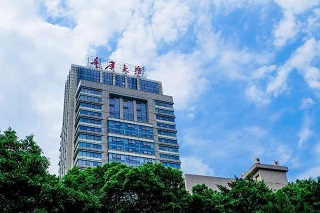【TITLE & POSITION】Full Professor
【ACADEMIC APPOINTMENTS】FRSMed (Fellow of Royal Society of Medicine), Member of EU Academy of Sciences (EUAS)
【CONTACT INFORMATION】E-mail: yiguozhang@cqu.edu.cn
【PERSONAL PROFILE】Dr. Yiguo Zhang is a pioneering scientist of topobiology and topogenetics. He was a visiting scholar working at University of Minnesota, before enlisted into the University of Dundee (UoD), Scotland, UK. After earned Ph.D. in Cell Biochemistry and Cancer Biology, 2007, he had been working as a CO-PI Senior Scientist, in the BioMedical Research Institute of UoD until the end of 2012 when he joined Chongqing University to carry out teaching and research work. His research work has been awarded by several Projects (and Key Projects) of the National Natural Science Foundation of China (NSFC). These have given rise to nearly 100 publications, with over than 5000 citations. Such many publications are also attributable to portions of his graduate students.
【HIGHLIGHT DISCOVERY】
In the near past 20 years, his major work has been focused in Nrf1 (also called NFE2L1) from its molecular biology to pathophysiological functions. Thus, as a world-leading expert on Nrf1, I have achieved a series of discoveries: 1) Nrf1 was first found as a transmembrane transcription factor that is integrated in the ER through its N-terminal signal anchor peptide; this inhibition is independent of Keap1, albeit it has relevant binding motifs. (Biochem J, 2006,399(3),373-385 & 2007,408(2),161-172; originally presented on 2004/7/18 to The 10th SCBA International Symposium held in Beijing p247); 2) Topobiology of Nrf1 with unique features to dictate its transactivation and proteolytic processing mechanisms had been elucidated solely by my group (Biochem J, 2009,418(2),293-310 & 2010,430(3),497-510; Sci. Rep.2013,3,e2006 &2015,5,e12983; PloS One, 2014;9(4),e93458); 3) Multiple Nrf1 isoforms are selectively generated by a juxtamembrane proteolytic processing mechanism, dependent of ERAD mediated by its target proteasome. (Sci. Rep. 2015,5,e12983;TAAP 2018,360,160-184 & 2018,360,212-235). 4) Nrf1 serves a versatile sensor for changing redox, glucose, cholesterol, and misfolded proteins within and around the ER, before it is topologically activated by deglycosylation and deubiquitination, alongside with its selective proteolysis.(Biochem. J,2014;473(8),961-1000; Antioxidants 2018, 9(1),e4; Develop. Cell 53 (4),377-378). Such topovectorial processing of Nrf1 is totally different from those mechanisms accounting for ATF6 and SREBP1 determined by a joint group of Joseph L. Goldstein and Michael S. Brown. 5) Nrf1 acts as a dominant-negative factor to confine onco-activation of Nrf2 in pathology (Sci Rep2016,6: e23775; Cancers 2018; 10(12),e520; Oxid. Med. Cell. Longev.2020:e5138539 & 2020:e4959821). 6) An ancient subgroup of Nrf and CNC homology (called NACH), which is more highly conserved with Nrf1, rather than Nrf2, was identified at an early evolutionary stage of this family transcription factors from the marine bacteria to humans (IJMS, 2018, 19 (10),e2927); 7) An variant called Nrf1D was identified to be the first candidate secretory transcription factor in the blood plasma, with its precursor existing as a unique redox-sensitive transmembrane CNC-bZIP protein in hemopoietic and somatic tissues (IJMS, 2018, 19 (10),e2940). And a recent finding indicates 8) activation of Nrf1 by USP19, a tail-anchored ubiquitin-specific protease in ER (bioRxiv, https://doi.org/10.1101/2020.10.05.326363). Overall, these studies give rise to several new conceptual advances in extended topobiology and topogenetic regulation, facilitating to gain a depth insight into molecular dynamical mechanisms underlying Nrf1-deficient pathological phenotypes, including non-resolvable inflammation, carcinogenesis, and neurodegenerative diseases.
【RESEARCH INTERESTS】
1) Topogenetic regulation of Nrf1 and other transmembrane factors in cancer and senescence.
2) Cell signalling-metabolism-gene regulatory networks in cancer and senescence.
3) New drug discovery in chemoprevention against cancer and senescence
4) Gene manipulations in synthetic biology and eco-evo-devobiology of cancer and senescence
【REPRESENTATIVE PUBLICATIONS】
1) Yiguo Zhang (corresponding author), Yuancai Xiang (2016) Molecular and cellular basis for the unique functioning of Nrf1, an indispensable transcription factor for maintaining cell homoeostasis and organ integrity. Biochemic Journal 473(8):961-1000. doi: 10.1042/BJ20151182.
2) Jianxin Yuan, Shuwei Zhang, Yiguo Zhang (corresponding author) (2018) Nrf1 is paved as a new strategic avenue to prevent and treat cancer, neurodegenerative and other diseases. Toxicol Appl Pharmacol. 2018 Sep 26;360:273-283. doi: 10.1016/j.taap.2018.09.037
3) Yiguo Zhang (corresponding author), Dorothy H. Crouch, Masayuki Yamamoto, and John D. Hayes. (2006) Negative regulation of the Nrf1 transcription factor by its N-terminal Domain is independent of Keap1: Nrf1, but not Nrf2, is targeted to the endoplasmic reticulum. Biochemical Journal. 399 (3), 373-395. First online published on Jul 27, 2006 (the online version contains supplemental data).
4) Yuancai Xiang, Josefin Halin, Zhuo Fan, Shaofan Hu, Meng Wang, Lu Qiu, Zhengwen Zhang, Peter Mattjus, and Yiguo Zhang (corresponding author) (2018). Topovectorial mechanisms control the juxtamembrane proteolytic processing of Nrf1 to remove its N-terminal polypeptides during maturation of the CNC-bZIP factor. Toxicol Appl Pharmacol. 2018 Sep 28;360:160-184. doi: 10.1016/j.taap.2018.09.039
5) Yu-Ping Zhu, Ze Zheng, Shaofan Hu, Xufang Ru, Zhuo Fan, Lu Qiu,Yiguo Zhang Yiguo Zhang (corresponding author) (2019). Unification of Opposites between Two Antioxidant Transcription Factors Nrf1 and Nrf2 in Mediating Distinct Cellular Responses to the Endoplasmic Reticulum Stressor Tunicamycin. Antioxidants (Basel). 2019 Dec 19;9(1):e4 (1-30). doi: 10.3390/antiox9010004.
